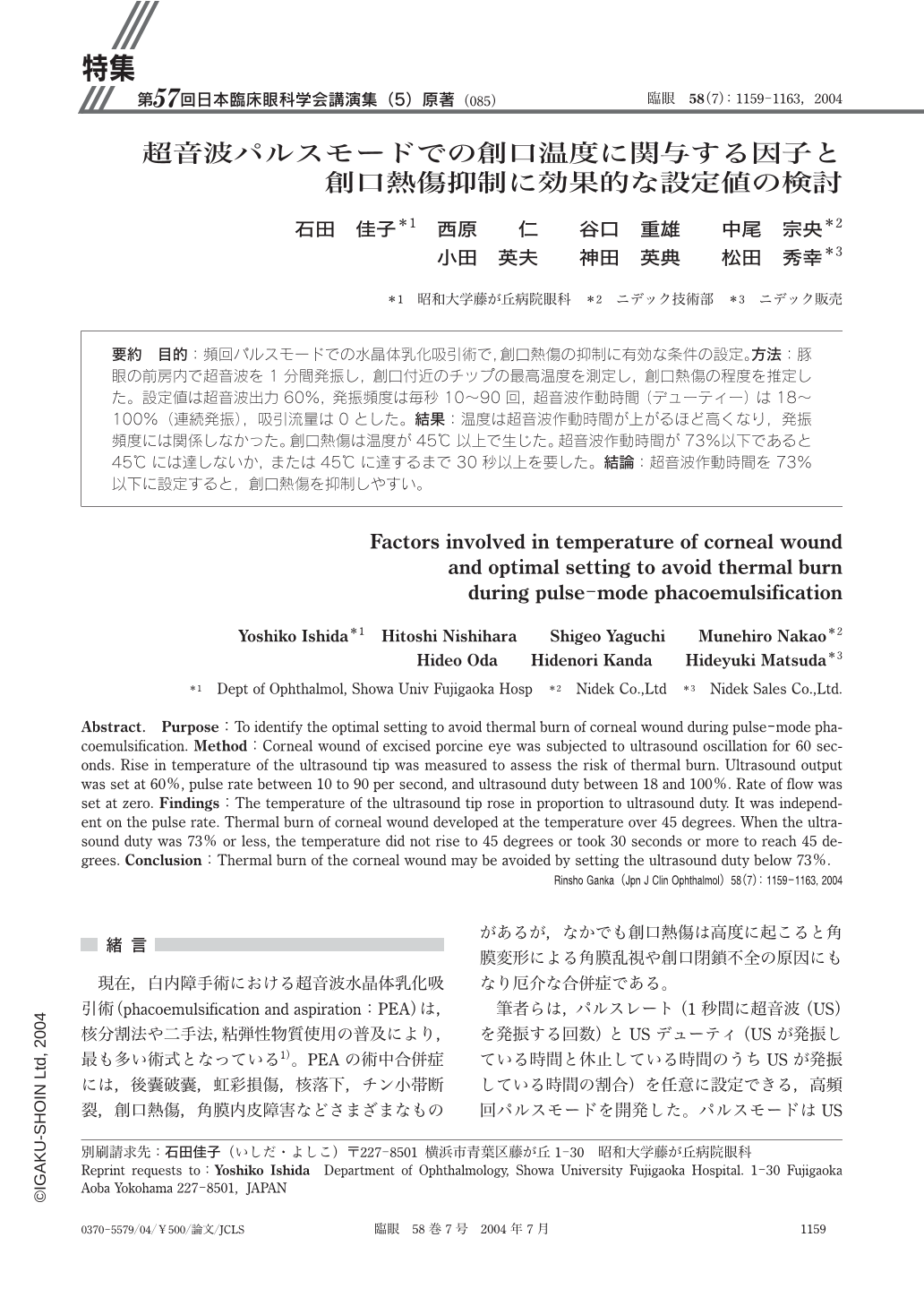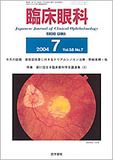Japanese
English
- 有料閲覧
- Abstract 文献概要
- 1ページ目 Look Inside
目的:頻回パルスモードでの水晶体乳化吸引術で,創口熱傷の抑制に有効な条件の設定。方法:豚眼の前房内で超音波を1分間発振し,創口付近のチップの最高温度を測定し,創口熱傷の程度を推定した。設定値は超音波出力60%,発振頻度は毎秒10~90回,超音波作動時間(デューティー)は18~100%(連続発振),吸引流量は0とした。結果:温度は超音波作動時間が上がるほど高くなり,発振頻度には関係しなかった。創口熱傷は温度が45℃以上で生じた。超音波作動時間が73%以下であると45℃には達しないか,または45℃に達するまで30秒以上を要した。結論:超音波作動時間を73%以下に設定すると,創口熱傷を抑制しやすい。
Purpose:To identify the optimal setting to avoid thermal burn of corneal wound during pulse-mode phacoemulsification. Method:Corneal wound of excised porcine eye was subjected to ultrasound oscillation for 60 seconds. Rise in temperature of the ultrasound tip was measured to assess the risk of thermal burn. Ultrasound output was set at 60%,pulse rate between 10 to 90 per second,and ultrasound duty between 18 and 100%. Rate of flow was set at zero. Findings:The temperature of the ultrasound tip rose in proportion to ultrasound duty. It was independent on the pulse rate. Thermal burn of corneal wound developed at the temperature over 45 degrees. When the ultrasound duty was 73%or less,the temperature did not rise to 45 degrees or took 30 seconds or more to reach 45 degrees. Conclusion:Thermal burn of the corneal wound may be avoided by setting the ultrasound duty below 73%.

Copyright © 2004, Igaku-Shoin Ltd. All rights reserved.


